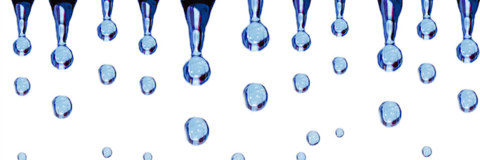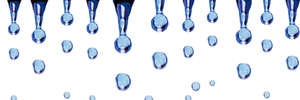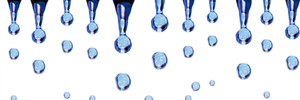Improvement of psoriasis-associated arthritis by treatment with molecular hydrogen
Psoriasis, a chronic inflammatory skin disease, is caused by infiltrating lymphocytes and associated cytokines, including tumor necrosis factor (TNF)α, interleukin (IL)-6, and IL-17. Effective treatments, including pathogenesis-based biological agents against psoriasis, are currently under development. Although the role of reactive oxygen species (ROS) in the pathogenesis of psoriasis has been investigated, it remains to be fully elucidated; ROS-targeted therapeutic strategies are also lacking at present. Therefore, the objective of the present study was to assess whether H2, a ROS scavenger, has a therapeutic effect on psoriasis-associated inflammation by reducing hydroxyl radicals or peroxynitrite in the immunogenic psoriasis cascade. Three methods were used to administer H2: Drop infusion of saline containing 1 ppm H2 (H2-saline), inhalation of 3% H2 gas, and drinking of water containing a high concentration (5-7-ppm) of H2 (high-H2 water). Treatment efficacy was estimated using the disease activity score 28 (DAS28) system, based on C-reactive protein levels, and the psoriasis area and severity index (PASI) score, determined at baseline and following each H2 treatment. Furthermore, levels of TNFα, IL-6, and IL-17 were analyzed. The DAS28 and PASI score of the three patients decreased during H2 treatment, regardless of the administration method. The psoriatic skin lesions almost disappeared at the end of the treatment. IL-6 levels decreased during H2 treatment in Case 1 and 2. IL-17, whose concentration was high in Case 1, was reduced following H2 treatment, and TNFα also decreased in Case 1. In conclusion, H2 administration reduced inflammation associated with psoriasis in the three cases examined and it may therefore be considered as a treatment strategy for psoriasis-associated skin lesions and arthritis.
Ishibashi T, Ichikawa M, Sato B, et al. Improvement of psoriasis-associated arthritis and skin lesions by treatment with molecular hydrogen: A report of three cases. Mol Med Rep. 2015 Aug;12(2):2757-64.
Hydrogen water intake via tube-feeding for patients with pressure ulcer
Pressure ulcer (PU) is common in immobile elderly patients, and there are some research works to investigate a preventive and curative method, but not to find sufficient effectiveness. The aim of this study is to clarify the clinical effectiveness on wound healing in patients with PU by hydrogen-dissolved water (HW) intake via tube-feeding (TF). Furthermore, normal human dermal fibroblasts OUMS-36 and normal human epidermis-derived cell line HaCaT keratinocytes were examined in vitro to explore the mechanisms relating to whether hydrogen plays a role in wound-healing at the cellular level. Twenty-two severely hospitalized elderly Japanese patients with PU were recruited in the present study, and their ages ranged from 71.0 to 101.0 (86.7 ± 8.2) years old, 12 male and 10 female patients, all suffering from eating disorder and bedridden syndrome as the secondary results of various underlying diseases. All patients received routine care treatments for PU in combination with HW intake via TF for 600 mL per day, in place of partial moisture replenishment. On the other hand, HW was prepared with a hydrogen-bubbling apparatus which produces HW with 0.8-1.3 ppm of dissolved hydrogen concentration (DH) and -602 mV to -583 mV of oxidation-reduction potential (ORP), in contrast to reversed osmotic ultra-pure water (RW), as the reference, with DH of < 0.018 ppm and ORP of +184 mV for use in the in vitro experimental research. In in vitro experiments, OUMS-36 fibroblasts and HaCaT keratinocytes were respectively cultured in medium prepared with HW and/or RW. Immunostain was used for detecting type-I collagen reconstruction in OUMS-36 cells. And intracellular reactive oxygen species (ROS) were quantified by NBT assay, and cell viability of HaCaT cells was examined by WST-1 assay, respectively. Twenty-two patients were retrospectively divided into an effective group (EG, n = 12) and a less effective group (LG, n = 10) according to the outcomes of endpoint evaluation and the healing criteria. PU hospitalized days in EG were significantly shorter than in LG (113.3 days vs. 155.4 days, p < 0.05), and the shortening rate was approximately 28.1%. Either in EG or in LG, the reducing changes (EG: 91.4%; LG: 48.6%) of wound size represented statistically significant difference versus before HW intake (p < 0.05, p < 0.001). The in vitro data demonstrate that intracellular ROS as quantified by NBT assay was diminished by HW, but not by RW, in ultraviolet-A (UVA)-irradiated HaCaT cells. Nuclear condensation and fragmentation had occurred for UVA-irradiated HaCaT cells in RW, but scarcely occurred in HW as demonstrated by Hoechst 33342 staining. Besides, under UVA-irradiation, either the mitochondrial reducing ability of HaCaT cells or the type-I collagen construction in OUMS-36 cells deteriorated in RW-prepared culture medium, but was retained in HW-prepared culture medium as shown by WST-1 assay or immunostain, respectively. HW intake via TF was demonstrated, for severely hospitalized elderly patients with PU, to execute wound size reduction and early recovery, which potently ensue from either type-I collagen construction in dermal fibroblasts or the promoted mitochondrial reducing ability and ROS repression in epidermal keratinocytes as shown by immunostain or NBT and WST-1 assays, respectively.
Li Q, Kato S, Matsuoka D, Tanaka H, Miwa N. - Hydrogen water intake via tube-feeding for patients with pressure ulcer and its reconstructive effects on normal human skin cells in vitro. Med Gas Res. 2013 Sep 10;3(1):20.



